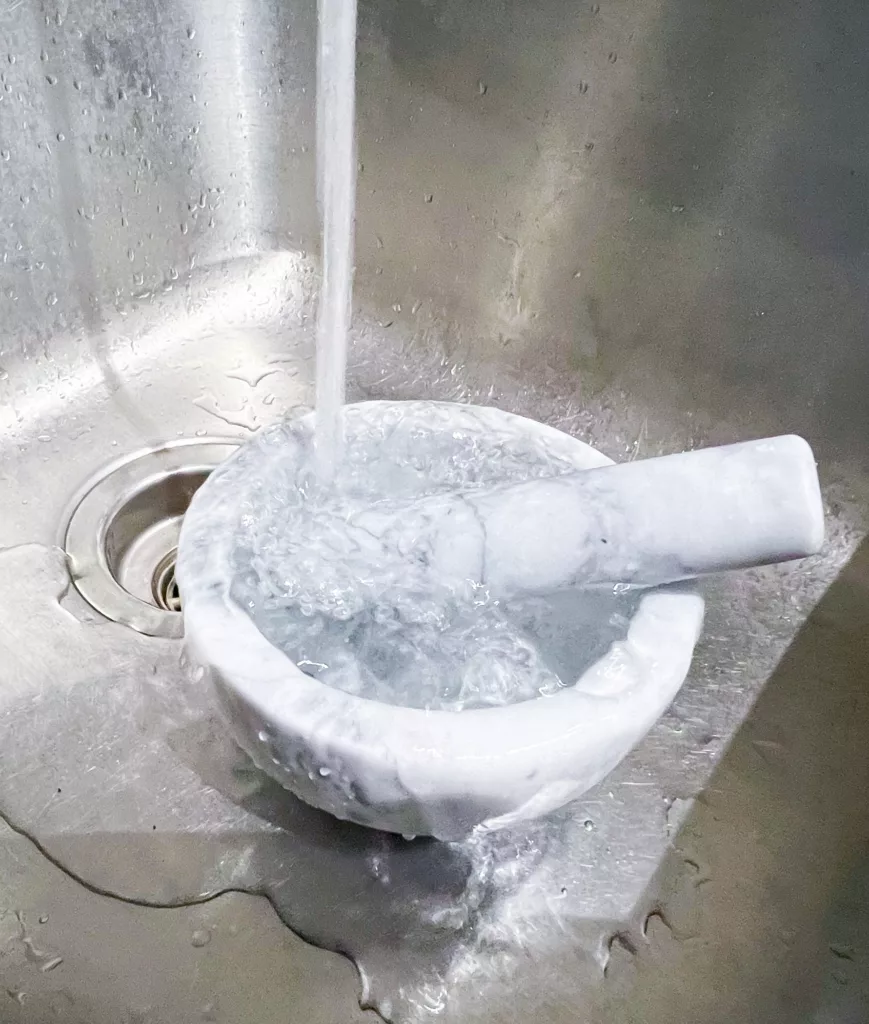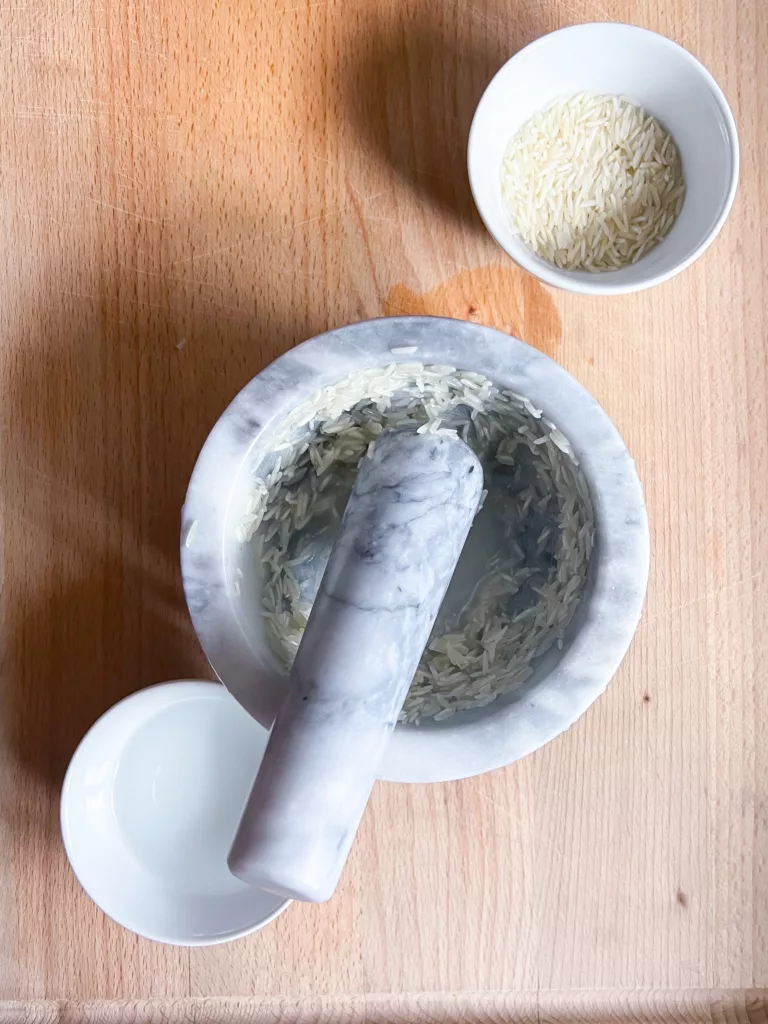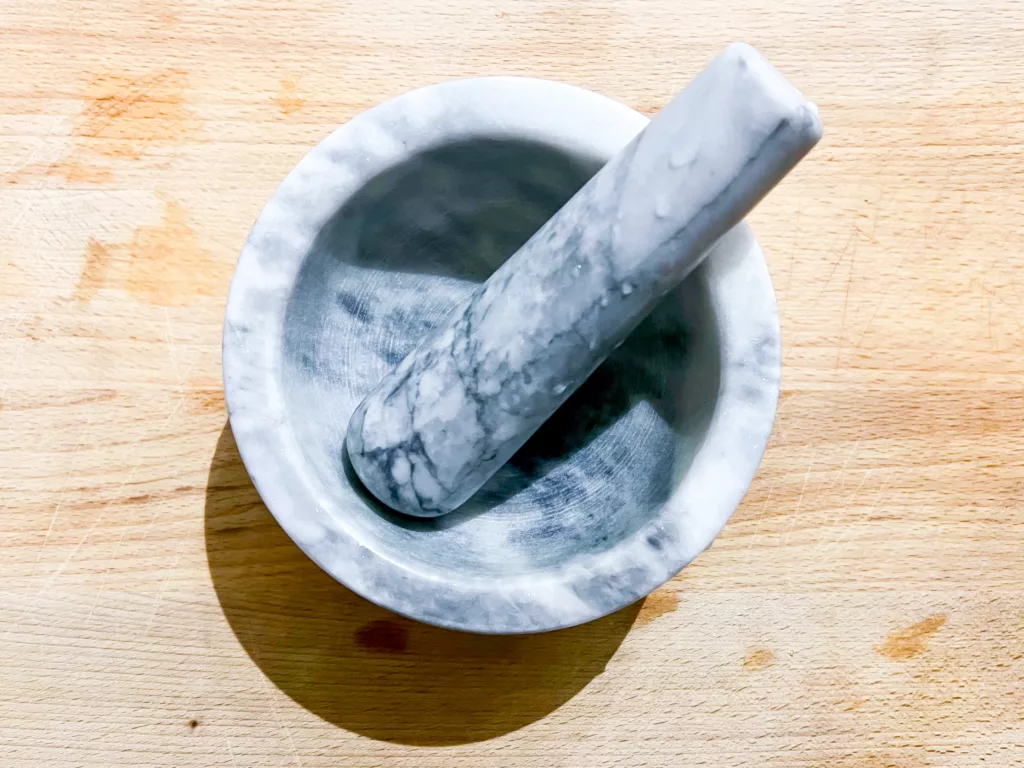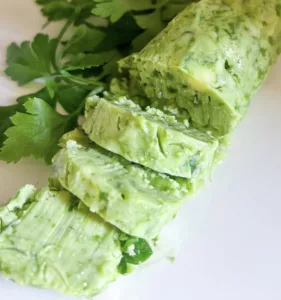Seasoning a pestle and mortar is an age-old culinary practice that transforms these kitchen tools into essential flavor enhancers. Whether you’re a seasoned chef or an aspiring home cook, understanding how to season a brand new mortar and pestle is crucial for elevating your culinary creations. In this guide, we’ll merge valuable insights from various sources with practical tips to help you master the art of seasoning a pestle and mortar.
Why Season a Mortar and Pestle?
Seasoning a mortar and pestle is a critical step, especially for those made of volcanic or basalt rock. When you purchase an unseasoned mortar and pestle, you’ll notice a gritty texture and tiny rock particles that can contaminate your ingredients. The porous nature of these materials can trap dirt and debris, which is why seasoning is essential. It helps eliminate the grittiness and ensures that your kitchen tool is ready for use without compromising the taste and quality of your dishes.
Cleaning and Preparing Your Mortar and Pestle
Before diving into the seasoning process, proper cleaning and preparation are necessary:
- Rinsing off Grit and Dust: Begin by rinsing the mortar and pestle with water. This step removes some of the grit and any dust that may have settled on the surface. You can use running water or even submerge them in a sink full of water, changing the water several times. Soaking overnight is an option as well, but never use soap or soapy water.
- Selecting the Right Materials: For seasoning, you’ll need white rice and water. It’s advisable to use inexpensive white rice, as it allows you to spot and remove debris effectively.
The Seasoning Process
Now, let’s delve into the seasoning process, which involves the following steps:
Rinsing off Grit and Dust
- Rinse the mortar and pestle with water to remove surface grit and dust.
- Avoid using soap, as it can interfere with the seasoning process.

Using White Rice and Water
- Place a small handful of white rice in the mortar, creating an even layer at the bottom.
- Add about a tablespoon of water over the rice.
- Ensure the rice is white to easily identify debris.

The Grinding Process
- Firmly hold the pestle and support the mortar if needed.
- Use a circular motion to grind the rice, working it around the entire inner surface.
- Apply pressure and engage your arm muscles for effective grinding.

Rinse and Repeat
- After grinding, the white rice will turn into a gray paste, indicating the removal of trapped dirt and debris.
- Ensure thorough cleaning by rinsing, brushing, and repeating the process multiple times until the rice paste remains white.
- It may take several repetitions to achieve a fully seasoned mortar and pestle.

Benefits of a Well-Seasoned Mortar and Pestle
A well-seasoned mortar and pestle offers numerous benefits:
- Enhanced Flavors: Your ingredients’ flavors will shine without interference from the mortar’s material.
- Extended Lifespan: Properly maintained mortars can last for generations.
- Versatility: A seasoned mortar and pestle can be used for various culinary tasks, from grinding spices to making pastes and sauces.
Creative Uses for Your Seasoned Tool
Once your mortar and pestle are seasoned to perfection, you’ll discover a world of creative culinary possibilities:
- Crafting Spice Blends: Customize your spice blends by grinding whole spices to your preferred consistency.
- Creating Herb Pastes: Blend fresh herbs with garlic and other ingredients to make flavorful herb pastes for marinades and dressings.
- Crushing Nuts and Seeds: Easily crush nuts and seeds for baking or adding to dishes.
Common Mistakes to Avoid
While seasoning your mortar and pestle, be cautious of these common mistakes:
- Using Soap: Avoid using soap or soapy water, as it can disrupt the seasoning process.
- Neglecting Regular Maintenance: After each use, rinse your mortar and pestle with warm water to prevent unwanted flavors.
- Choosing the Wrong Materials: Stick to white rice or alternatives, as certain materials can alter the mortar’s flavor.
Tips for Long-Term Maintenance
To ensure your mortar and pestle remain in top condition:
- Handle with Care: Use gentle pressure when grinding to prevent chipping or cracking.
- Proper Storage: Store your mortar and pestle in a cool, dry place to prevent moisture buildup.
- Re-Season When Necessary: If you notice a loss of seasoning, repeat the seasoning process to restore its effectiveness.
Watch Our Video On Seasoning A Pestle Mortar Quick & Easy
Conclusion: How To Season a Pestle and Mortar
Seasoning your mortar and pestle is a culinary tradition that pays off in the long run. With a well-seasoned mortar and pestle, you can unlock the full potential of your ingredients, ensuring that your dishes are bursting with flavor and aroma. So, embark on this seasoning journey and take your culinary skills to new heights.
FAQ: Pestle and Mortar
Season your mortar and pestle when you first acquire it and periodically thereafter. If you notice a change in flavor or a less smooth surface, it’s time to re-season.
While it’s possible, using an unseasoned mortar and pestle can compromise the flavor of your ingredients. Seasoning is highly recommended for optimal results.
Avoid using salt, garlic, or any flavored ingredients for seasoning, as they can alter the mortar’s flavor.
White rice is preferred for seasoning due to its ability to highlight debris. Alternatives may not be as effective.
Your mortar and pestle are fully seasoned when the rice paste remains consistently white, indicating the removal of trapped dirt and debris.
Celebrate Your Newly Seasoned Mortar and Pestle
Congratulations! You’ve successfully seasoned your mortar and pestle. Now, reward yourself with a spicy culinary adventure. Prepare a delicious curry paste, a zesty salsa, or a flavorful guacamole, and savor the fruits of your labor





Great article thank you. Loved the quick video too
You’re very welcome! I’m glad you enjoyed the article, and the quick video added to your experience. If you have any more questions or if there’s anything else you’d like to see, feel free to let me know. Happy reading and watching!